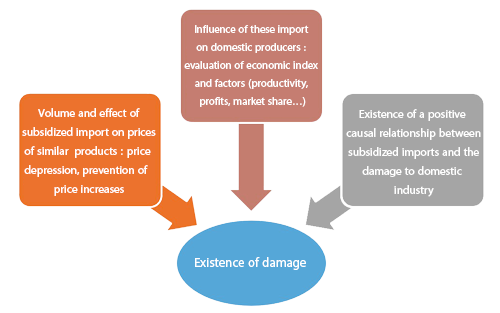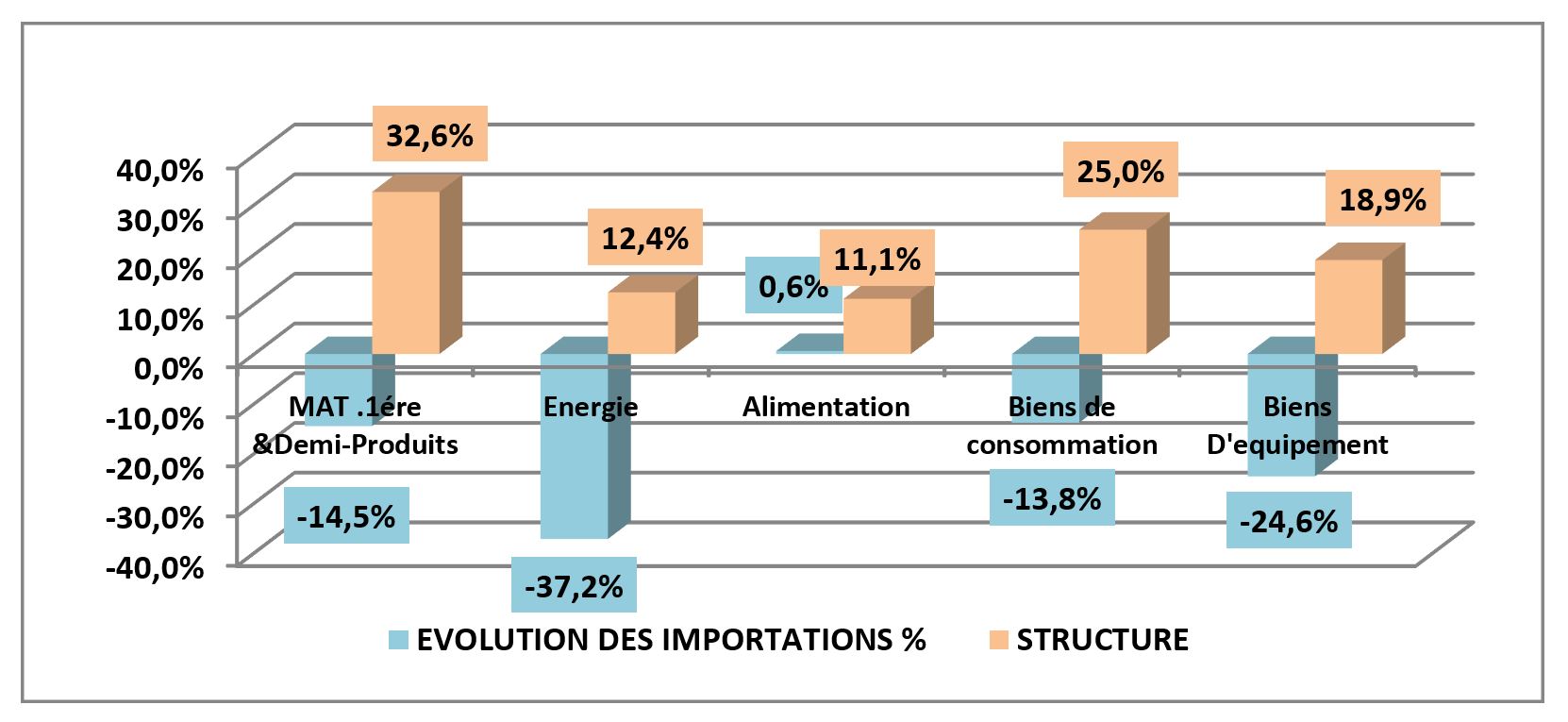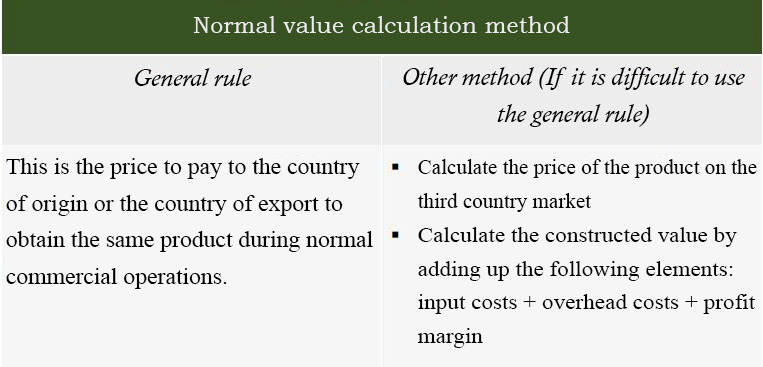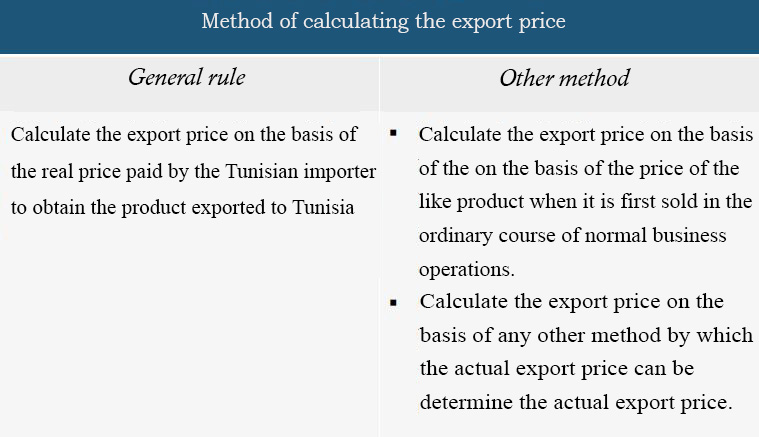In order to optimize the operations of transporting the goods to the customer, it is better to choose the most appropriate mode of transport by taking into account parameters such as the quantity of goods to be transported, the delivery time, the cost of transport, the distance to be covered and the security linked to the delivery of the goods. The table below shows the advantages and disadvantages for each mode of transport.
Entries by admin
The customs code
To complete an import procedure, it is necessary to have a customs code, which will be used by the operator as a unique identifier in the TTN foreign trade electronic counter. The latter is presented as the computer network that connects the various stakeholders in the procedures of foreign trade and transport in Tunisia.
The economic operator can file his request for the creation of a customs code at the customs office closest to his home or at the one-stop shop of the Agency for the Promotion of Industry and Innovation (APII).
The file contains the following documents:
- The original of the certificate of registration in the national business register;
- A request on a specific form to be collected from the nearest customs office or from the counter of the Agency for the Promotion of Industry and Innovation (APII);
- A copy of the tax identity card legalized at the tax control office;
- A copy of the declaration of existence certified with the tax control office;
- A certificate of publication of the notice of creation of the company in the Official Journal of the Republic of Tunisia (in the case of a legal person);
- A copy of the company’s status (in the case of a legal entity);
- A copy of the national identity card of the applicant or the legal representative of the company
Procedural phases relating to the defense against unfair import practices
The procedural phases relating to the defense against unfair
import practices are defined as follows:
The subsidy
Subsidy is the granting of a benefit to a foreign exporter by the government of the exporting country in the form of a financial contribution that confers a benefit measured against generally applicable trading standards and normal market conditions.

The financial contribution can take one of the following forms:
- A direct transfer of funds (for example a donation, a loan, equity participation)
- A potential direct transfer of funds or liabilities (e.g. a loan guarantee),
- Public revenues that are normally payable are abandoned or not collected (example: tax credits),
- Supplies of goods or services other than general infrastructure, or purchase of goods by public authorities
- Income or price support
Conditions for considering the subsidy as an unfair import practice
For the subsidy as defined above to be considered an unfair import practice, it must be “specific”, i.e. reserved for certain companies or when its granting is not subject to objective criteria or that these criteria, despite their existence, are not respected.

The imposition of countervailing duties can only be applied on the basis of an investigation which has found that the imports in question are subsidized and are causing damage to the domestic industry producing a like product. The damage determination is based on the following positive evidence:

Countervailing duty investigations must cease immediately in cases where the amount of subsidy is de minimis or where the volume of subsidized imports is negligible.
Dumping
Dumping is a Practice which consists of selling a product on the Tunisian market at prices lower than that of the country of origin or country of provenance. To determine the existence of dumping, a comparison must be made between the export price and the normal value of the product in question. The following two tables make it possible to calculate the two values mentioned above.
The dumping margin rate is calculated on the basis of the following formula:

An anti-dumping measure may be applied if the volume of the dumped imports represents
Import safeguards measures

Import safeguards measures are taken by the the Ministry of Trade and Export Development after consulting with the National Foreign Trade Council. They consist of raising customs duties or applying a quantitative restriction or a tariff quota.
This makes it possible to deal exceptionally and urgently with a massive increase in imports of a given product causing serious injury or the threat of serious injury to a domestic industry that locally manufactures a similar or directly competitive product.
In order to be able to take safeguard measures, it is essential to fulfill the following conditions

The existence of injury must always be based on “positive evidence” and involve an “objective examination” of the following elements:
The procedural phases relating to
import safeguards measures
Geographical distribution of foreign trade
80.0% of Tunisian exports are destined for the EU and UMA during the year 2020, despite the drop in our exports to these two destinations (EU: -11.3%, UMA: -22.3%).
Our national exports also fell to the Agadir zone (-14.5%, share: 2%), sub-Saharan Africa (-3.5%, share: 2.7%) and Asia (-13.2%, share: 4.0%).
On the other hand, our exports recorded an increase to Turkey (+13.1%, share: 1.2%).
Outside the EU, the trade deficit worsens, reaching in terms of value 15819.3 MD (instead of 12757.8 MD), this result shows the importance of our foreign trade with our main partner the EU (ranking first: customer and supplier) and its effect on the national trade balance.
The trade balance deficit recorded in 2020 of around -12757.8 MD is largely explained by the deficit recorded with certain countries:
China: -5393.8 MD
Turkey: -2140.6 MD
Algeria: -1719.5 MD
Ukraine: -1431.9 MD
Russia: -1007.0 MD
India: -608.3 MD
On the other hand, a trade balance surplus is recorded with other countries:
France: 3515.8 MD
Germany: 1217.0 MD
Libya: 1096.3 MD
Morocco: 294.6 MD
SECTORAL ANALYSIS OF EXPORTS
The analysis of exports by sector of activity during the year 2020 shows the following observations:
Selon la structure des exportations le secteur des IME est classé le premier avec une part d’environ 45.4% et une baisse des exportations de -14.0%.
The decline in exports concerns several sectors of activity. The rates vary between -24.4% (Mining, phosphates and derivatives sector) and -9.4% (Energy sector).
On the other hand, the sector of Agriculture and agro-food industries recorded an increase of 12.0% following the increase in our sales of olive oil.
Excluding the Energy, Phosphate Mines and drift sectors, foreign trade during the year 2020 is characterized by:
Trade deficit : 9120.8 MD (instead of 12757.8MD)
Decrease in exports of around 11.4% (instead of -11.7%)
Fall in imports of around 15.0% (instead of -18.7%)
Coverage rate of 79.4% instead of 75.2%

Analysis of imports by product groups:
The food product group recorded a slight increase of 0.6% (share: 11.1%) following the increase in our imports of durum wheat, barley, corn and soybean meal.
On the other hand, the rest of the product groups recorded a decline during the year 2020: Raw material & Semi-finished products (-14.5%, share: 32.6%), Consumer goods (13.8%, share: 25.0%), Goods Equipment (-24.6%, share: 18.9%), Energy (-37.2%, share: 12.4%).














